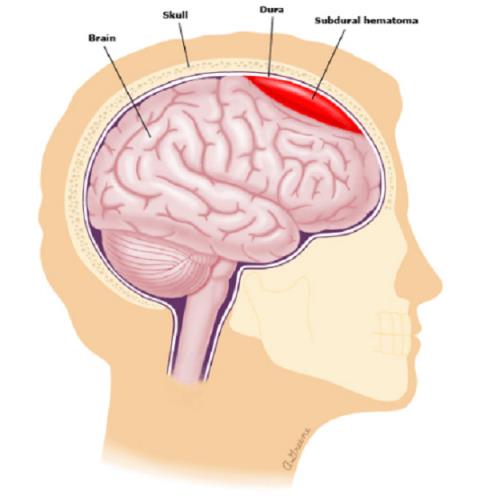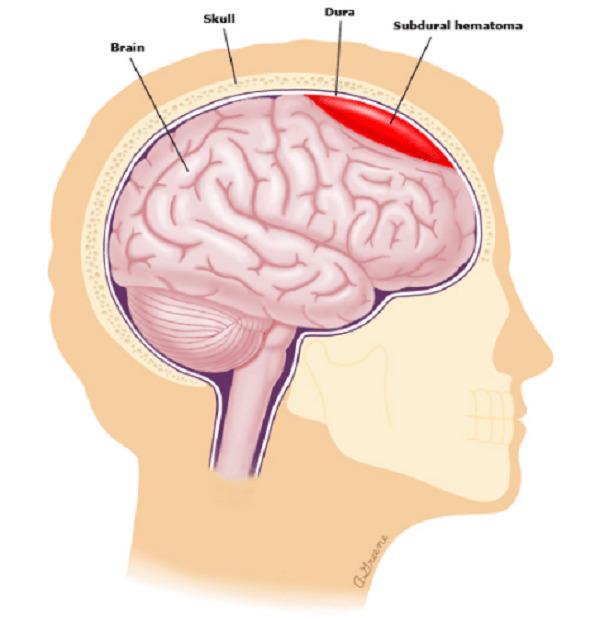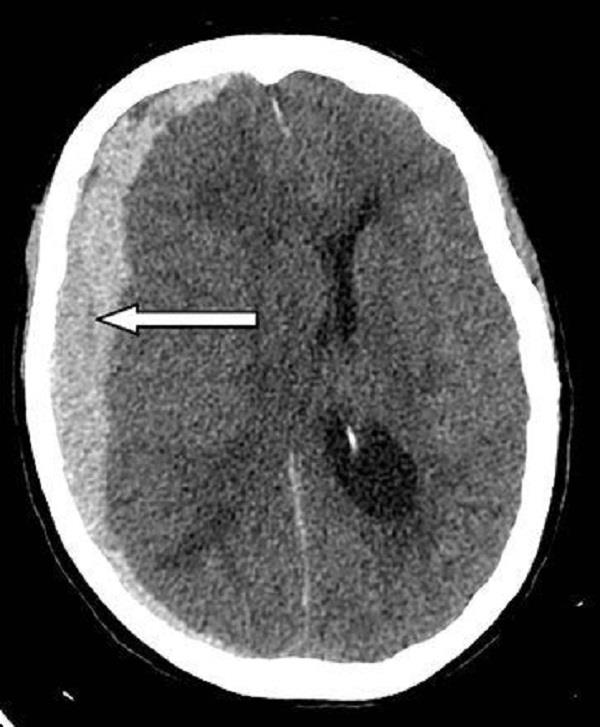Conventional medicine: Subdural hematoma

Subdural hematoma is a common bleeding condition in the subdural space in traumatic brain injury caused by traffic accidents. Hematomas can cause pressure on the brain and threaten the patient's life if not diagnosed and treated promptly.
content
1. What is a subdural hematoma?
This hardening is bleeding at the surface of the brain, located in the subdural space. The bleeding occurs under the membrane that surrounds the brain, called the dura. Although the bleeding is not usually from the brain, if the hematoma is large, it can press on the brain. This compression leads to symptoms.
Traumatic brain injury is the cause of most cases of subdural hematoma. The most common causes of trauma are:
- Traffic accidents.
- Fall high.
- Affray.
>> Head trauma is a fairly common condition in life. Learn more: Conventional medicine: Head trauma.
Subdural hematomas are classified into two main groups:
- Acute subdural hematoma: This group appears from the first hours after trauma. If bleeding continues, the hematoma continues to grow in size in the days following the injury.
- Chronic subdural hematoma: This group is common in elderly patients. In this group of patients, there is often physiological brain atrophy with age. Minor head injuries can also damage small cerebral veins, leading to bleeding at the surface of the brain. The injury can be so mild that the person is completely unaware or doesn't remember having a head injury. This blood mass grows slowly in size, which can last for weeks.

Subdural hematoma: subdural hematoma
2. Symptoms
Some patients are unconscious after severe head trauma and have acute subdural hematoma.
Then symptoms may appear such as:
- Headache .
- Vomiting.
- Weakness.
- Numbness.
- Difficulty in moving.
- Having problems with pronunciation.
- Dizziness .
- Confusion or difficulty in thinking.
- Sleepy.
- Epileptic.
3. Diagnosis
A subdural hematoma is detected through brain imaging such as computed tomography (CT) scans and sometimes magnetic resonance imaging (MRI). Through the images, we can see the presence and size of the hematoma.
4. Treatment of subdural hematoma
The treatment chosen depends on the size of the hematoma and the patient's symptoms. Sometimes, patients need surgery to remove the hematoma and decompress the brain. If the hematoma is small in size, your doctor may recommend conservative treatment and close monitoring. In the case of conservative treatment and follow-up, repeated CT scans or MRIs are necessary.

Image of CT scan film
If you are taking anticoagulants such as aspirin or warfarin, your doctor will ask you to stop taking them. Be sure to provide information about the medications you are currently taking and discuss when it is safe to resume these medications.
In the group of patients with a large subdural hematoma that compresses the brain and threatens life, it is necessary to undergo emergency decompression surgery. The surgeon has many technical methods to remove the hematoma such as:
Open the exit hole
A hole is drilled in the skull above the hematoma, through this hole the hematoma escapes to decompress the brain. Usually chosen in patients with chronic subdural hematoma.
Decompressive craniotomy with reposition of the skull cap
In this method, part of the skull is removed. This provides better access to the hematoma and better decompression of the brain. The removed bone was placed back after the hematoma and decompressed the brain at the end of surgery.
Open skull decompression:
In this method, a part of the skull is removed and is not immediately placed, but will be replaced by a "crane patch" surgery after the patient's condition allows. The removal of the skull cap helps to decompress well and prolong the brain, preventing cases of brain edema threatening to drop the brain. However, this method is not often used and depends on the surgeon's judgment depending on the case.
Doctor Ngo Minh Quan